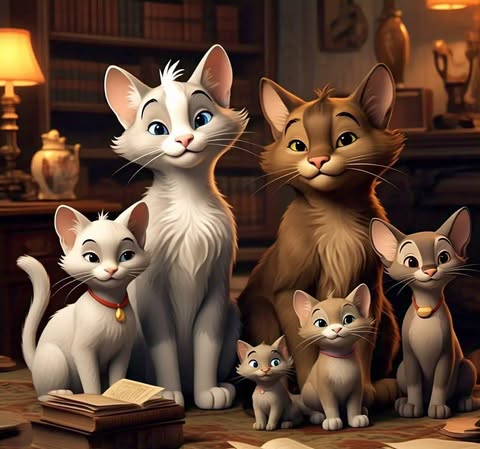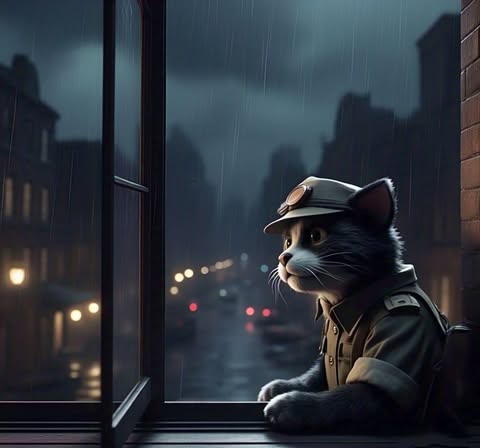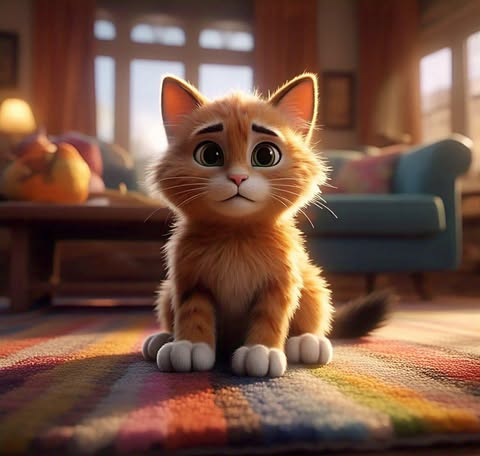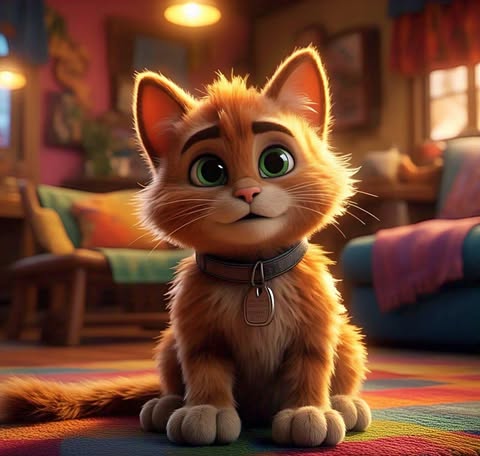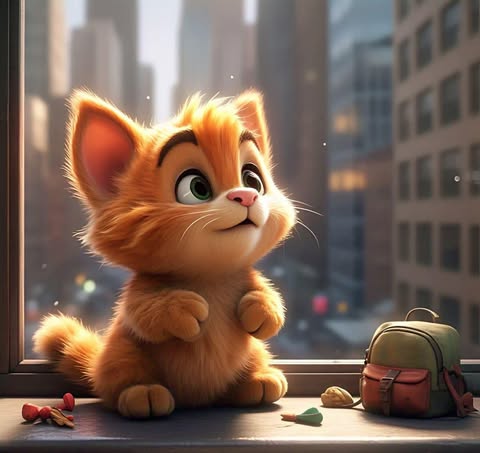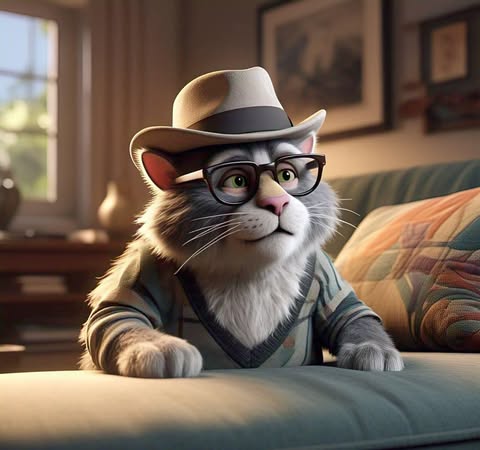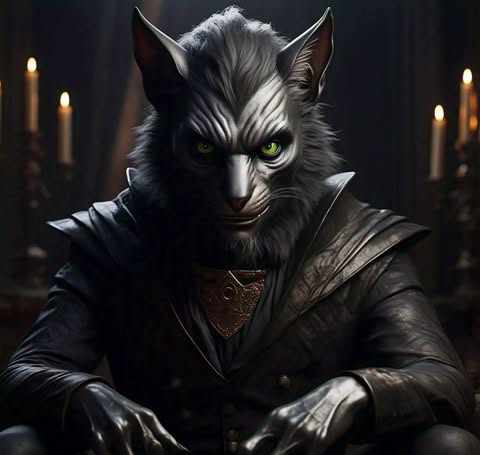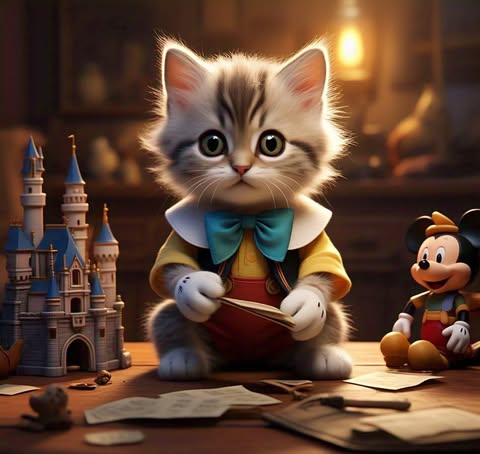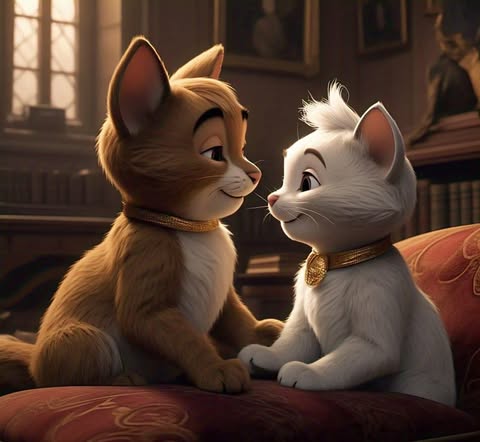From Aristocats to Oliver: The Most Memorable Disney Cats and Their Impact on Animation
The Rise of Feline Stars in Disney Animation
Disney has introduced countless iconic characters over the years, but few have captured hearts as effortlessly as their feline stars. From the sophisticated Duchess in The Aristocats to the street-smart Oliver in Oliver & Company, Disney’s cats have left an indelible mark on animation. These characters are more than just pets or sidekicks—they are heroes, villains, and comic relief, each contributing to the storytelling magic that defines Disney.
The Early Days of Animated Cats
Long before CGI and hyper-realistic animation, Disney’s animators brought cats to life through hand-drawn artistry. One of the earliest examples is Figaro from Pinocchio (1940), Geppetto’s mischievous pet. Though not a main character, Figaro’s expressive movements and playful antics set the standard for future feline animations. His design was simple yet effective, relying on exaggerated expressions to convey emotion—a technique that would become a Disney trademark.
Another notable early appearance was Lucifer, the villainous cat in Cinderella (1950). Unlike Figaro, Lucifer was crafted to be sly and menacing, slinking through scenes with calculated malice. His role as an antagonist showcased how versatile feline characters could be, proving that cats could be just as compelling as humans in driving a story forward.
The Aristocats: A Turning Point for Disney Cats
In 1970, The Aristocats became the first Disney film to feature cats as the central characters. The movie followed Duchess and her three kittens as they navigated the dangers of Paris after being abandoned by a greedy butler. What made The Aristocats stand out was its blend of elegance and humor. Duchess, voiced by Eva Gabor, exuded grace, while Thomas O’Malley, the alley cat, brought rugged charm and comedy.
The film’s animation style was a departure from earlier Disney works, incorporating looser, more fluid movements that captured the agility of cats. Scenes like the “Ev’rybody Wants to Be a Cat” musical sequence showcased dynamic choreography, highlighting how far Disney’s animation techniques had evolved. The Aristocats proved that animal-centric stories could carry emotional weight and appeal to audiences of all ages.
The Influence on Future Animated Films
The success of The Aristocats paved the way for more feline-focused stories in animation. It demonstrated that animals could be relatable protagonists, not just supporting characters. This shift influenced later films like The Lion King, where animal characters carried complex narratives, and Oliver & Company, which reimagined a classic story with a feline lead.
Beyond Disney, other studios took note, leading to a wave of animal-centric animations in the 1980s and 1990s. The legacy of The Aristocats is evident in how modern animators approach animal characters—giving them distinct personalities, intricate designs, and emotional depth.
As Disney continued to innovate, its feline characters became more than just cartoon animals—they became cultural icons. The next part of this series will explore how The Rescuers and Oliver & Company further expanded the role of cats in Disney’s animated universe.
From Sidekicks to Protagonists – The Evolution of Disney Cats
While The Aristocats was a milestone, Disney’s feline characters continued to evolve, taking on more prominent roles in later films. This shift from sidekicks to leading figures marked a new era in animation, where cats were no longer just comic relief but central figures driving the plot.
The Rescuers and the Introduction of Rufus
In The Rescuers (1977), a minor but memorable feline character made his debut—Rufus, the elderly cat who aids the orphan Penny. Though not a main character, Rufus stood out for his warmth and wisdom. His design was softer and more realistic compared to earlier Disney cats, with detailed fur textures and subtle movements that made him feel lifelike.
Rufus’s role was small but significant. He provided comfort to Penny, reinforcing the idea that cats could be nurturing figures rather than just playful or villainous. This added a new dimension to how feline characters were portrayed, showing that they could embody kindness and mentorship.
Oliver & Company: A Modern Twist on a Classic Tale
By the late 1980s, Disney was ready to take another leap with feline protagonists. Oliver & Company (1988) reimagined Charles Dickens’ Oliver Twist with a street-smart kitten named Oliver as the lead. This film was groundbreaking in several ways—it was one of Disney’s first contemporary urban settings, and it featured a more diverse cast of animal characters.
Oliver’s design was a mix of innocence and resilience, with big, expressive eyes that made him instantly endearing. His journey from abandoned kitten to beloved pet mirrored classic underdog stories, making him a relatable hero. The film also introduced Dodger, a charismatic stray dog, but Oliver remained the emotional core of the story.
The animation in Oliver & Company reflected advancements in the medium, with smoother movements and more dynamic action sequences. The film’s soundtrack, featuring Billy Joel as Dodger, also brought a modern edge that appealed to younger audiences.
The Shift Toward Anthropomorphism
One of the most notable trends in Disney’s portrayal of cats was the increasing use of anthropomorphism—giving animals human-like traits. While earlier films like The Aristocats had cats walking on two legs occasionally, Oliver & Company leaned further into this style. Characters wore clothes, used slang, and displayed complex emotions, blurring the line between animal and human behavior.
This approach made the characters more relatable, especially for younger viewers. It also allowed for richer storytelling, as cats could now express thoughts and feelings in ways that felt authentic. This trend would continue in later Disney films, influencing how animal characters were written and animated.
The Legacy of 80s and 90s Disney Cats
The success of Oliver & Company proved that audiences were eager for stories centered around animal protagonists. It also set the stage for future films like The Lion King, where animals carried epic narratives. The film’s blend of humor, heart, and adventure became a blueprint for Disney’s later works.
As Disney entered the Renaissance era, cats took a backseat to princesses and mythical creatures, but their impact remained. The next part of this series will explore how Disney’s later films, including The Lion King’s secondary feline characters and Tangled’s Pascal, kept the feline legacy alive in subtle ways.
Disney’s Renaissance and the Subtle Presence of Feline Characters
While the Disney Renaissance (1989-1999) is best known for its human-centric stories—The Little Mermaid, Beauty and the Beast, Aladdin—feline characters still played important, if understated, roles. Though cats were no longer the main focus, their presence in these films continued to shape Disney’s animation style and storytelling techniques.
The Villainous Side: Cats as Antagonists
One of the most striking uses of feline characters during this era was in their portrayal as cunning antagonists. Unlike earlier villains like Cinderella’s Lucifer, Renaissance-era cats were given more depth and personality, making them memorable despite their smaller roles.
In The Hunchback of Notre Dame (1996), Clopin’s cat-like puppet, while not a real feline, moved with the same sly grace as Disney’s previous cat villains. The way it slinked and pounced mirrored the mannerisms of actual cats, reinforcing their association with trickery and unpredictability.
Meanwhile, Pocahontas (1995) featured Meeko the raccoon, whose mischievous behavior was reminiscent of classic Disney cat antics. Though not a cat himself, Meeko’s playful, sometimes sneaky demeanor borrowed heavily from feline traits, showing how cat-like mannerisms influenced other animal characters.
The Comic Relief: Feline Humor in the Background
Even in films where cats weren’t central to the plot, they often provided comic relief. Beauty and the Beast (1991) featured the castle’s servants, including the suave yet cowardly footstool dog—but no prominent cats. However, the way Lumière and Cogsworth bickered had a cat-and-dog dynamic, further embedding feline energy into Disney’s storytelling.
In The Lion King (1994), while the focus was on lions (technically big cats), the film also included smaller feline mannerisms in its animation. Scar’s movements were sleek and calculated, much like a domestic cat stalking prey. His design emphasized his predatory nature, with sharp angles and slow, deliberate motions that made him one of Disney’s most chilling villains.
The Shift to CGI: Cats in the Digital Age
By the late 1990s and early 2000s, Disney began experimenting with CGI animation, leading to a new era for animal characters. Dinosaur (2000) and Chicken Little (2005) relied heavily on computer-generated imagery, but cats didn’t take center stage until later films.
However, the influence of earlier feline characters could still be seen in how animals were animated. The fluidity of movement, the expressiveness of their eyes, and the way they interacted with environments all stemmed from techniques developed in hand-drawn films like The Aristocats and Oliver & Company.
The Legacy of Cats in Disney’s Renaissance
Though the Disney Renaissance was dominated by human and fairy-tale narratives, feline characters still left their mark—whether through villainous archetypes, comic relief, or subtle animation choices. Their presence, though diminished, ensured that cats remained a part of Disney’s storytelling DNA.
Modern Disney Cats and Their Lasting Legacy
As Disney animation entered the 21st century, the studio continued to evolve, blending traditional storytelling with cutting-edge technology. While cats were no longer the sole focus of feature films, they remained an important part of Disney’s animated world—appearing in supporting roles, short films, and even reimagined classics. Modern Disney cats carry forward the legacy of their predecessors while adapting to contemporary animation styles and audience expectations.
The Return of Feline Charm in Tangled and Beyond
One of the most beloved modern Disney cats is Pascal, the chameleon from Tangled (2010). Though not a feline, Pascal’s behavior—playful, mischievous, and highly expressive—was heavily inspired by classic Disney cat mannerisms. His silent but vivid reactions, from exaggerated eye rolls to smug smirks, mirrored the physical comedy of characters like Figaro and Thomas O’Malley. This demonstrated how feline traits continued to influence Disney’s approach to animal sidekicks.
Meanwhile, The Princess and the Frog (2009) introduced minor but memorable cat characters in the streets of New Orleans. While none had major roles, their sleek animations and urban charm were reminiscent of Oliver & Company, proving that Disney’s animators still drew inspiration from their earlier feline stars.
Disney Shorts and Experimental Animation
In recent years, Disney has used short films to experiment with feline characters in fresh ways. Kitbull (2019), a Pixar SparkShort, told the touching story of a feral kitten and an abused pit bull forming an unlikely friendship. The animation style was strikingly different from traditional Disney films—rough, hand-drawn, and emotionally raw—but the kitten’s expressive movements and personality were pure Disney magic.
Another notable example is Far from the Tree (2021), which featured a raccoon family but used cat-like agility and curiosity in their movements. These shorts prove that even when cats aren’t the main characters, their influence on animation remains strong.
The Live-Action Remakes: Reimagining Classic Cats
Disney’s live-action adaptations have also revisited famous feline characters. The Lion King (2019) photorealistic CGI brought Simba, Scar, and Nala to life with unprecedented detail. While some critics argued that the hyper-realistic style limited facial expressions, the animators still incorporated subtle cat-like behaviors—ears twitching in irritation, tails flicking in agitation—to maintain emotional depth.
The upcoming live-action Aristocats (announced but not yet released) will be another test of how Disney modernizes its classic feline stars. Will the new version retain the whimsy of the original, or will it lean into realism like The Lion King? Either way, it shows that Disney still sees value in its cat-centric stories.
Cats in Disney’s Future: What Lies Ahead?
As Disney continues to expand its animated universe through films, TV series, and streaming content, cats are likely to remain a staple. Shows like The Wonderful World of Mickey Mouse have reintroduced classic characters like Figaro, while upcoming projects may explore new feline heroes.
Additionally, Disney’s acquisition of franchises like Star Wars and Marvel has opened doors for cat-like aliens and creatures (such as The Mandalorian’s loth-cats), proving that feline appeal extends beyond traditional animation.
The Enduring Impact of Disney’s Feline Stars
From the elegant Duchess in The Aristocats to the scrappy Oliver in Oliver & Company, Disney’s cats have left an indelible mark on animation history. They’ve evolved from sidekicks to protagonists, from hand-drawn figures to CGI creations, but their charm remains timeless.
These feline characters have influenced animation techniques, storytelling styles, and even how other studios approach animal-centric narratives. Whether as heroes, villains, or comic relief, Disney’s cats continue to captivate audiences, proving that their legacy is far from over.
As animation technology advances and storytelling trends shift, one thing is certain: Disney’s feline stars will always have a place in the hearts of viewers, young and old. Their whiskers, wits, and whimsy ensure that they remain some of the most memorable characters in the Disney universe.
